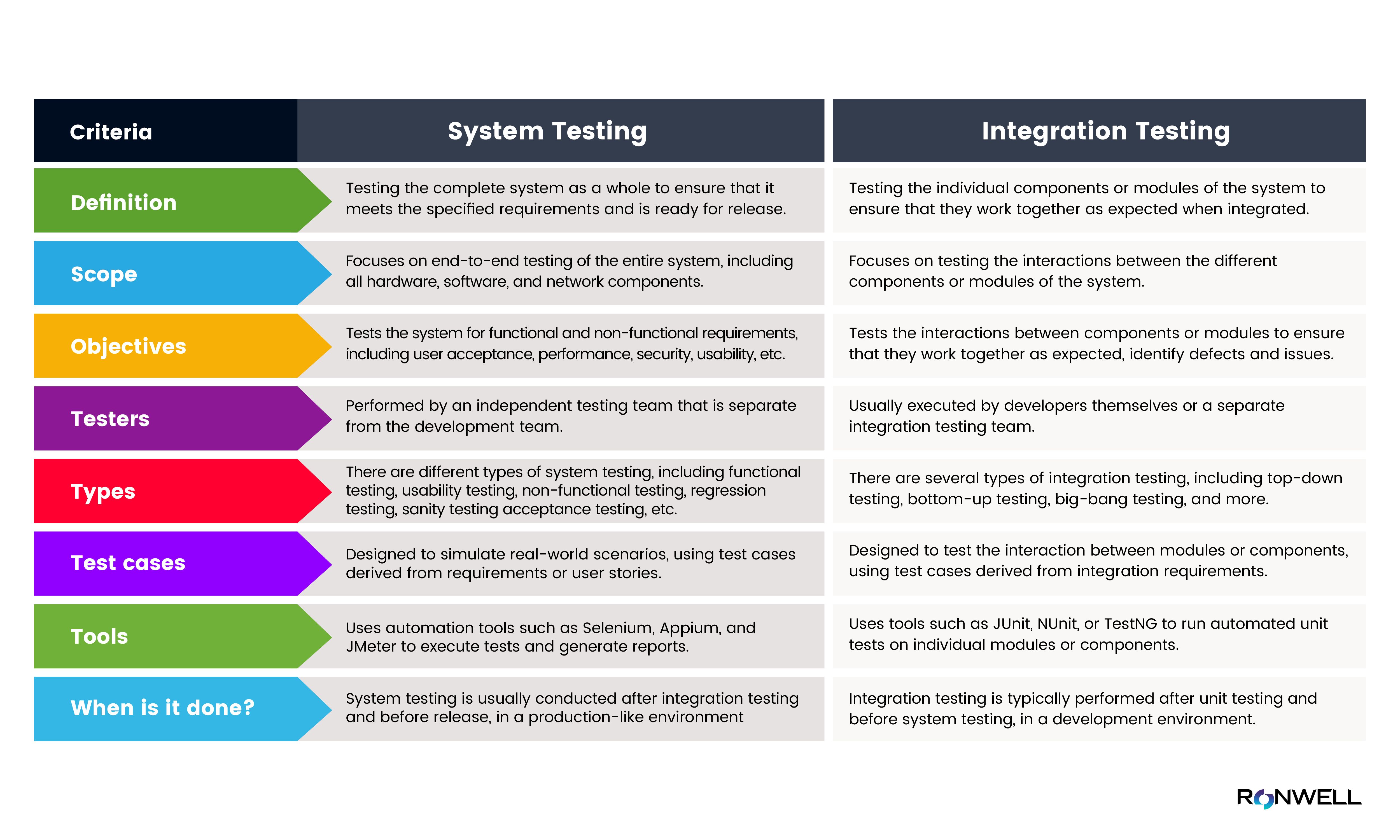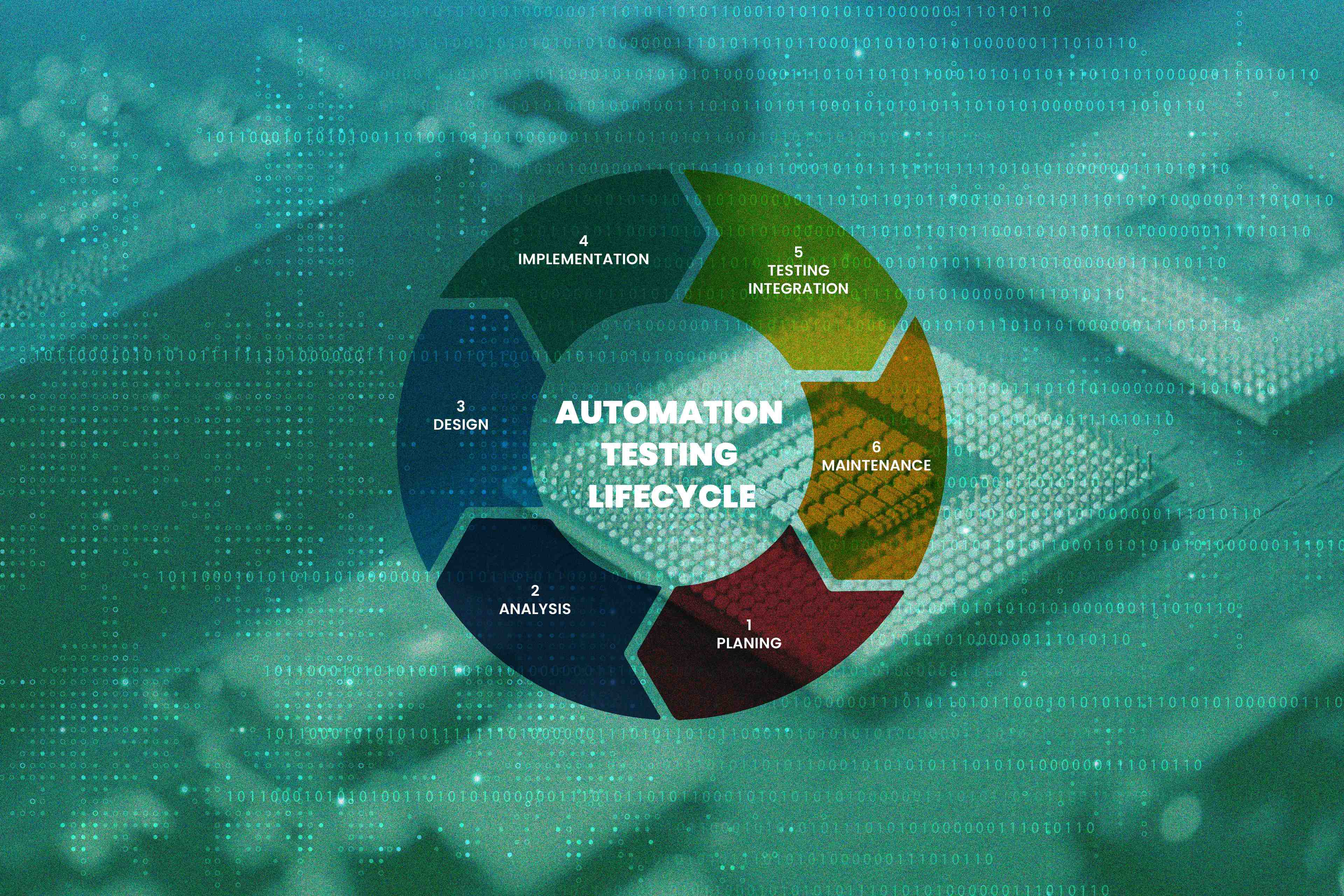

Our Services
Test Automation ServicesAI & Machine LearningBlockchainCRM ConsultingData Science & EngineeringDevOpsDigital MarketingDigital TransformationEmbedded Software DevelopmentERP Consulting ServicesManaged IT ServicesMergers & Acquisitions AdvisoryQA And Testing ServicesRobotic Process Automation SAP Consulting DevelopmentSoftware and Application DevelopmentSQL ConsultingStrategy ConsultingSustainability
- Contact Us
Our Services
- Test Automation Services
- AI & Machine Learning
- Blockchain
- CRM Consulting
- Data Science & Engineering
- DevOps
- Digital Marketing
- Digital Transformation
- Embedded Software Development
- ERP Consulting Services
- Managed IT Services
- Mergers & Acquisitions Advisory
- QA And Testing Services
- Robotic Process Automation
- SAP Consulting Development
- Software and Application Development
- SQL Consulting
- Strategy Consulting
- Sustainability
Insight
Company
Industries
- Contact Us

System Testing vs Integration Testing: Differences and Examples
System testing and integration testing are two tests that are important for quality software development. Learn the differences and similarities now!
- insight
- /
- blog
- /
- system-testing-vs-integration-testing
Highlights
- Run ‘System testing’ to evaluate the entire system to ensure it meets requirements and functions as intended.
- Use ‘Integration testing’ to test interactions between different modules of the system.
Testing your software applications at different stages of the software development life cycle is the best way to develop software.
System testing and integration testing are two tests that must be passed to ensure the quality of your software. Both tests are important at all stages of making software, so every tester needs to know about them.
Integration testing focuses on testing the interactions between different components or modules of a software system, while system testing focuses on testing the system as a whole to ensure that it meets the specified requirements and is ready for release.
In this article, you will learn what system testing and integration testing are and learn
the differences and similarities between system testing and integration testing.
Let’s get started with the system testing.

What is System Testing?
System testing is the process of running tests on the whole software system from the point of view of the user. The goal of this test is to see if the product meets the needs and requirements of the user and to find any bugs or problems that need to be fixed. It is also called an end-to-end test because it covers everything and is done at a late stage in the development process.
Do you know which one is better for your project: manual testing or automation? Check out our blog article: Manual Testing vs. Automation Testing.
The system testing is executed mostly by test engineers after the integration testing has been completed. Also, you do not need to know internal code in system testing, as it consists entirely of black-box testing techniques.
To understand the differences, Black Box Testing vs White Box Testing, read our blog.
System testing can be divided into two categories:
- Functional testing (unit testing, regression testing, etc.)
- Non-functional testing (performance testing, security testing, and more).
For unit testing vs functional testing!
What is Integration Testing?
Integration testing is the process of evaluating multiple modules and components simultaneously. It is designed to determine how these numerous modules interact with one another. First, each module is individually tested to ensure that it functions properly, and then an integration test is conducted to evaluate their performance collectively.
Integration testing comes before system testing and after unit testing. This testing can be carried out by QA testers, test engineers, and developers. There are several methods for conducting integration tests, including big-bang integration testing, top-down integration testing, and bottom-up integration testing, among others. Employing a test plan could be of great help during integration testing. You can check out our guide to learn how to create a test plan and a test automation strategy.
What are the Differences between System Testing and Integration Testing?
While both types of testing are important and have some similarities, they differ in several ways.
Here we have compiled a comparison table highlighting the key differences between System Testing and Integration Testing:
Criteria | System Testing | Integration Testing |
Definition | Testing the complete system as a whole to ensure that it meets the specified requirements and is ready for release. | Testing the individual components or modules of the system to ensure that they work together as expected when integrated. |
Scope | Focuses on end-to-end testing of the entire system, including all hardware, software, and network components. | Focuses on testing the interactions between the different components or modules of the system. |
Objectives | Tests the system for functional and non-functional requirements, including user acceptance, performance, security, usability, etc. | Tests the interactions between components or modules to ensure that they work together as expected, identify defects and issues. |
Testers | Performed by an independent testing team that is separate from the development team. | Usually executed by developers themselves or a separate integration testing team. |
Types | There are different types of system testing, including functional testing, usability testing, non-functional testing, regression testing, sanity testing acceptance testing, etc. | There are several types of integration testing, including top-down testing, bottom-up testing, big-bang testing, and more. |
Test cases | Designed to simulate real-world scenarios, using test cases derived from requirements or user stories. | Designed to test the interaction between modules or components, using test cases derived from integration requirements. |
Tools | Uses automation tools such as Selenium, Appium, and JMeter to execute tests and generate reports. | Uses tools such as JUnit, NUnit, or TestNG to run automated unit tests on individual modules or components. |
When is it done? | System testing is usually conducted after integration testing and before release, in a production-like environment | Integration testing is typically performed after unit testing and before system testing, in a development environment. |
Advantages | System testing ensures that the software system meets the requirements and performs as expected in the production environment. It also helps identify defects and issues that could negatively impact end-users. | Integration testing helps detect defects and issues early in the software development life cycle, which can save time and money. It also ensures that the individual components, or modules, of the system work together as expected. |
Disadvantages | System testing can be time-consuming and expensive, especially if it is done manually. It can also be difficult to replicate real-world scenarios in a test environment. | Integration testing can be complex, and there is a risk that some defects or issues may go undetected if testing is not comprehensive. It can also be difficult to simulate complex interactions between different modules or components. |
What are the Similarities between System Testing and Integration Testing?
System testing and integration testing are two types of testing performed during the software development life cycle. Here are some similarities between system testing and integration testing:
- Objective: Both system testing and integration testing aim to ensure that the software system functions as expected and meets the requirements specified in the design.
About automation testing goals and objectives for guide!
- Testing environment: They are conducted in an environment that is similar to the production environment to ensure that the system works correctly in a realistic setting.
- Test data: They use real data to simulate the actual user scenario and to verify the integration of various modules of the software.
- Types of defects: Both testing types detect defects that occur due to interface mismatches, communication errors, and functionality issues.
- Involvement: These testing types require the involvement of the development team, the testing team, and other stakeholders to ensure the proper functioning of the software system.
- Documentation: They require proper documentation of test results, defects found, and resolution of defects.
- Importance: Both types of testing are critical for ensuring the quality of the software and minimizing the risk of defects and failures in the production environment.
Both integration testing and system testing share many similarities in terms of objectives, environment, data, defects, involvement, documentation, and importance.
Example to Differentiate Between System Testing and Integration Testing
Project: Online Coffee Shop
Integration Testing Example:
The integration testing team would verify the interaction between different modules such as user registration, menu display, payment gateway, order processing, and delivery tracking.
For instance, the integration testing team would verify if the customer can successfully place an order, and the order details are reflected in the order processing module, and the order is successfully tracked by the delivery tracking module.
System Testing Example:
System testing for an online coffee shop would involve testing the entire system as a whole. The system testing team would test the complete end-to-end functionality of the system.
For example, they would verify if the website can handle multiple users concurrently and if it's user-friendly. For the user to successfully navigate through all the ways to purchase the product after entering the website, it is necessary for the backend data and frontend display to seamlessly enable the user to buy the product on the entire website.
They would also test the performance, security, and scalability of the system, such as verifying if the website can handle a high volume of traffic without crashing.
In this case, the system testing team would also test the payment gateway to ensure that it's secure and that the transaction details are accurate.
Also, they would test the delivery tracking system to ensure that customers can track their orders accurately.
Final Thoughts
There are significant differences between system testing and integration testing, particularly in terms of the when, where, and how of software testing. But keep in mind that both tests make the software better and make it run better. You can read a list of the 10+ Best Software Testing Books in 2023 in our blog article.
System testing reveals to the developer how well the application meets functional and non-functional requirements. Integration testing, on the other hand, involves seeing how the different parts of the software under development work together.
Both types of testing are critical to ensuring the quality and reliability of a software system and often require the use of automated testing tools to streamline the testing process and identify defects more efficiently.
Want to streamline the testing process? Contact us now!
References
Software Testing Class - System Testing vs Integration Testing
Writer:

Halime Yılmaz
Content Marketing Specialist
6 min read
20 April 2023, Thursday
Related Posts
Related Industries
Related Services














